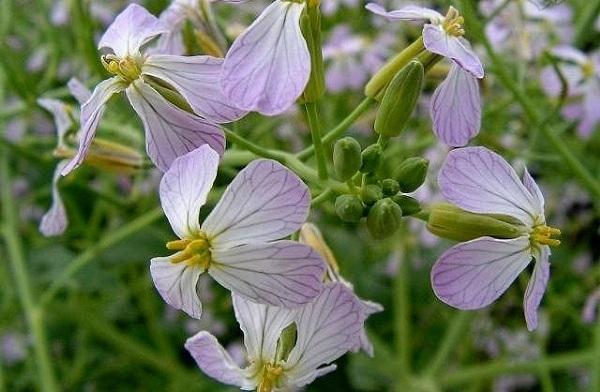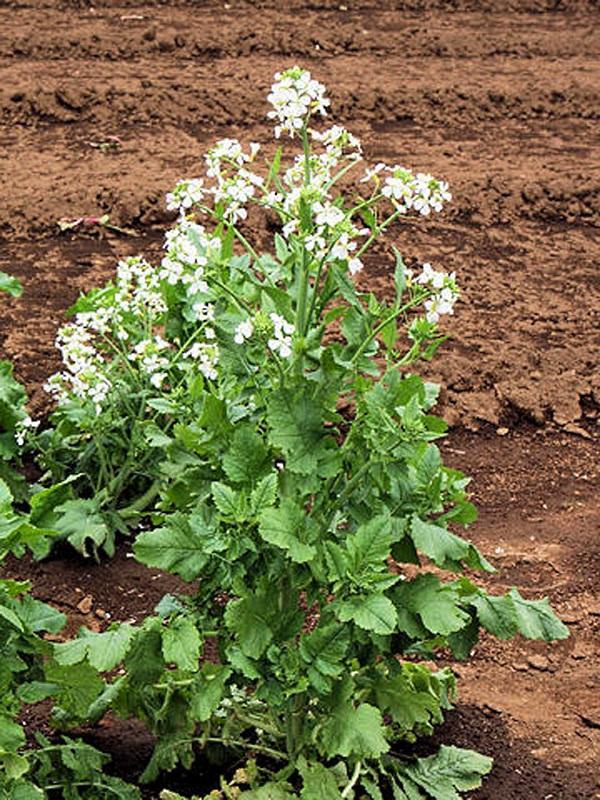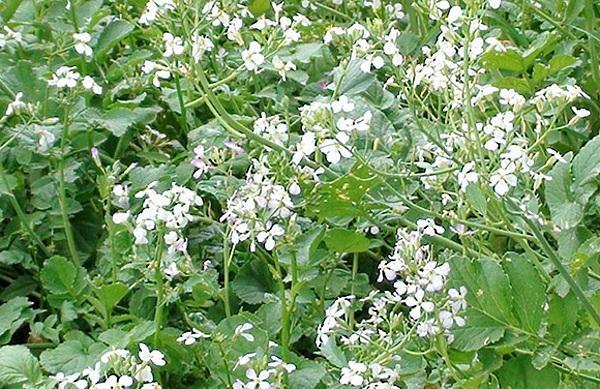Effective fertilizer and green manure for the soil - oil radish
 Almost every summer resident grows a radish on his garden plot in order to have a very useful and tasty root vegetable in stocks in winter, saving from severe colds. However, there are also varieties that are not able to form fruits, but are valuable for their branched foliage and inflorescences. Such varieties of seeds are sown to obtain green manure green manure.
Almost every summer resident grows a radish on his garden plot in order to have a very useful and tasty root vegetable in stocks in winter, saving from severe colds. However, there are also varieties that are not able to form fruits, but are valuable for their branched foliage and inflorescences. Such varieties of seeds are sown to obtain green manure green manure.
Inherent qualities of oil radish
The oil-bearing radish (Raphanus sativus. Var. Oleiformis) is famous for its special properties. This is a cruciferous, annual plant. This culture does not form a root crop, like a common radish, but deeper into the soil cover with a developed strong root system, due to which a large number of leaves are formed on the surface.

The oil radish reaches a height of up to two meters. Its foliage can be used for food, especially often housewives prepare salads from tender leaves.
But the overgrown stems are an excellent fertilizer for the soil, the so-called green manure.

This culture is not whimsical to growing conditions. She is not afraid of drought, cold weather, or excessively wet conditions. It is not necessary to plant the radish in well-lit sunny places, it will yield excellent crops in shaded areas.
The time of vegetative development from planting to the appearance of the first inflorescences is forty days, and this makes it possible to grow radish several times in a favorable spring-summer-autumn season.
The later the radish is sown into the soil, the more the consumption of seeds is obtained, their germination decreases. There are about thirty grams of seeds per ten square meters.
Seed material is sown by scattering seeds over a specific area and incorporating them with an ordinary light rake to a depth of about two centimeters for excellent germination.
The effect of using oil radish
- Sowing oil radish is mainly associated with the desire to improve the structure of the soil in garden beds and make it more nutritious for all the necessary nutrients and organic elements.
- The well-developed root system of the radish helps to raise the most useful minerals into the upper layers of the soil, so necessary for vegetable crops that are grown at home on ordinary household plots.
- After the shoots reach their maximum height and have flowered, they are mowed, and the area with the roots is dug up by the usual manual method using a garden bayonet shovel. A green crushed mass is prepared from green, not coarse stems, which is dug into the soil. If the stems have stood and hardened, then compost is prepared from them.

- Oil radish very effectively fills the land plot, does not allow weeds to break through, due to which nothing else grows on the beds, except for vegetables and radish. It is the radish that today is an excellent method of weed control on large agricultural plots and fields.
When is the best time to use oil radish as a fertilizer?

This culture is most often grown on loamy soils, peat bogs, slightly acidic plots, vineyards, which contributes to the destruction of malignant pathogens in the soil, wireworm and fungal diseases for a period of three to six years, loosening the enriched soil, its drainage, accelerating the growth of shoots of other crops , providing improved air and moisture holding capacity.
Radish is used as a green manure to enrich the soil with the missing amount of nitrogen, potassium, calcium, phosphorus, as well as in areas that are too weedy, especially those covered with wheatgrass.Another important property of oil radish is its ability to protect the soil from water and wind erosion, especially in the autumn and spring periods.